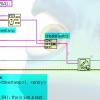Design of (TS + LV + SQL inputs)
-
Similar Content
-
sequence Sequence toolkit with similar function with TestStand, Include Sequence Editor and Executer and can be well integrated into your source code
By CunZhang,
- sequence editor
- teststand
- (and 2 more)
- 1 reply
- 4,838 views
-
Sequence toolkit with similar function with TestStand, Include Sequence Editor and Executer and can be well integrated into your source code
By CunZhang,
- sequence
- sequence editor
- (and 3 more)
- 10 replies
- 14,591 views
-
- 0 replies
- 2,730 views
-
- 2 replies
- 4,316 views
-
- 3 replies
- 2,699 views
-




Recommended Posts
Join the conversation
You can post now and register later. If you have an account, sign in now to post with your account.